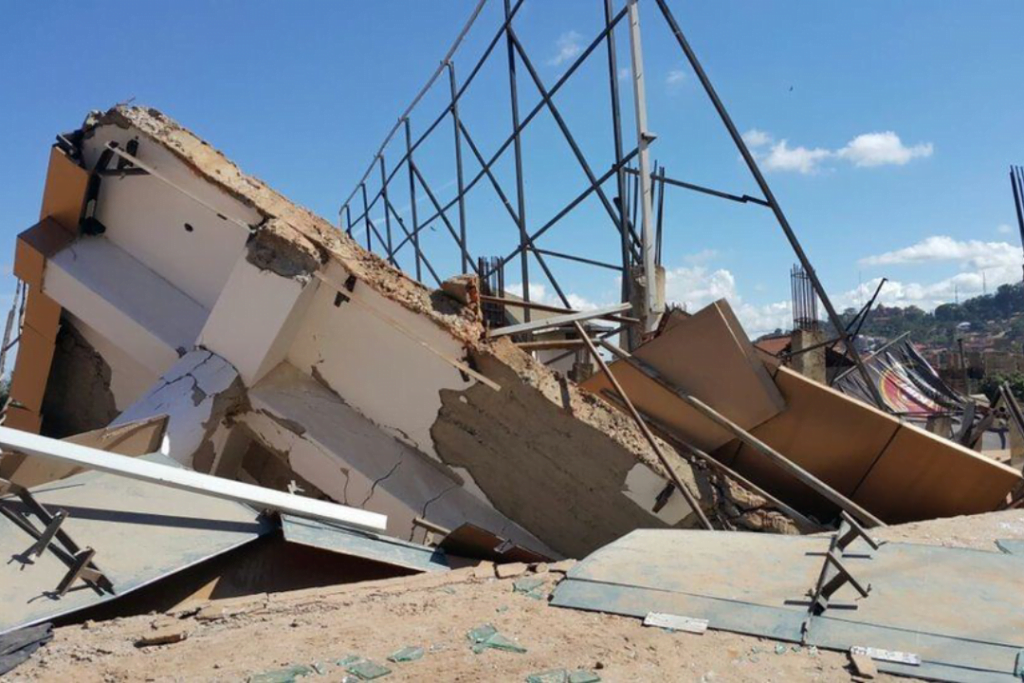Every day someone somewhere is constructing something in Uganda. It could be a small out-door toilet, an underground tank, shop rental space, rental units, apartments, bungalows, storied residential houses, big shopping complex, huge government building, roads or even a bridge. It is safe to say the construction industry is experiencing that much needed boom with even the Government of Uganda in recent years dedicated a significant proportion of the national budget to physical infrastructure development as an attempt to make it a priority.
However, for the many magnificent infrastructure developments across the country every year, there is always this “one or two” reports of structure failures which cause nationwide fear from time to time. Sure “one or two” sound almost negligible when compared to many but in construction; this one or two could have huge effects such as destruction of property and even loss of lives, something that no one takes lightly.
Some of the notable incidents that have occurred in the recent past include;
· July 16, 2021, a storied building at Kabulengwa in Nansana Municipality collapsed, killing one person.
· March 16, 2021, Fido Dido building on Kampala Road caves in, killing two.
· May 2020, a five-floor building collapsed in Lukuli, Makindye, killing 13 people.
It is therefore very important to know why these “one or two” structural failures occur.
These causes range from design and specification errors to poor decisions and human related factors and some of these include;
· Neglect of design and building approval procedures – Building construction is typically regulated by the city or town council authorities. It is a normal procedure that before building construction is commenced, its architectural, structural and/or electro-mechanical drawings are submitted to the local authorities for review, comments if any and consequently approval by a professional engineer. These councils highlight all the minimum requirements for any form of construction. Construction works that are conducted without undertaking this approval process would normally be deemed illegal and because they are not regulated could result in structural failure.
· Inadequate design capacity of structural elements – this is more pronounced in situation where approval procedures are neglected because this falls in the bracket of minimum requirement. Each structural element (beams, columns, retaining walls, foundations) for various building types have specifications at need to be met and should be clearly reflected in the drawings. Anything short of these requirements may result in structural failure.
· Limited professional supervision of site works – we can look at this in two ways; 1) economic factor influence proprietor decisions in retaining professional services so in an attempt to “save funds”, a proprietor or building owner may resort to employ a less qualified person or even ignore them altogether. 2) The councils responsible for regulation are understaffed; this means supervising all these sites is almost close to impossible.
· Poor materials and workmanship – even after successfully navigating the approval process, substitution of materials clearly specified on drawings combined with poor workmanship when it comes to material storage, preparation as well as construction methodology all have an effect on the strength, durability of the structure. For example, PPZ cement requires longer and more efficient curing than OPC cements, a factor which is not favoured under typical site conditions.
Going forward, it pertinent that the National Building Review Board (NBRB) under the Ministry of Works and Transport established by the Building Control Act, 2013 enforces the following functions as mandated;
1. Monitor of building developments.
2. Ensure that the design and construction of buildings and utilities to which the public is to have access cater for persons with disabilities (PWDs).
3. Oversee, inspect and monitor the operations of Building Committees.
4. Hear and determine appeals from persons dissatisfied with the decisions of a Building Committee and,
5. Determine the fees to be charged by urban and district building committees for approval of plans, issue of building permits and occupation permits
With the latter highlighted by many ‘developers’ as a major ‘excuse’ for their evading of the local council authorities at the time of submission of plans and/or design phase of the project which consequently befits the purpose of ensuring that a building plan is critiqued before construction commences hence why we end up with some ‘structural failures’.

